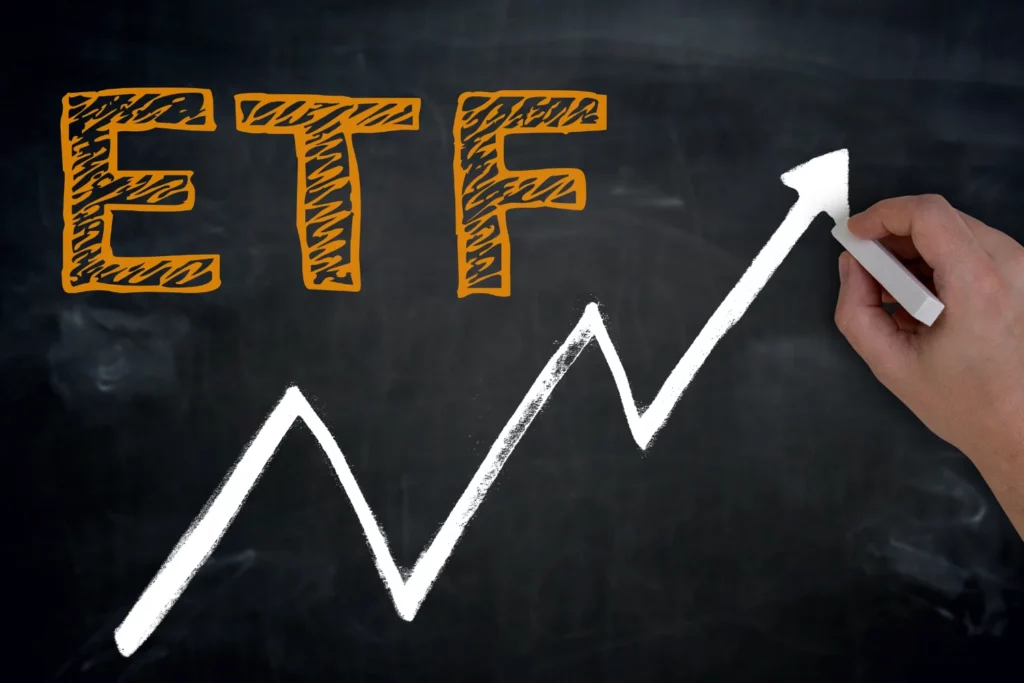Understanding Leveraged ETFs: Risks and Rewards

Leveraged ETFs (Exchange-Traded Funds) have revolutionized how investors participate in financial markets. These exchange-traded investment funds offer a variety of advantages, such as diversification, liquidity, and low costs. However, among the wide range of available ETFs, leveraged ETFs stand out as an intriguing but potentially risky option. In this article, we will explain what leveraged ETFs are, how they work, and the risks and rewards they entail.
What are leveraged ETFs?
Leveraged ETFs are a specialized type of ETF designed to amplify the movements of the underlying assets they track. Unlike traditional ETFs, which seek to track the performance of an underlying index, leveraged ETFs use financial derivatives and leverage strategies to deliver results that are a multiple of the performance of the index they follow. Common multiples are 2x or 3x, meaning a 2x leveraged ETF will aim to achieve double the gains (or losses) of the underlying index, while a 3x leveraged ETF will aim to triple them.
How do leveraged ETFs work?
Leveraged ETFs use financial instruments such as futures and swaps to achieve their leverage objectives. For example, if a 2x leveraged ETF tracks an index that increases by 1% on a given day, the ETF will attempt to generate a 2% return over the same period. This is accomplished by purchasing derivatives that reflect this multiple. To maintain these leverage multiples, the managers of leveraged ETFs must adjust their positions daily. This involves buying or selling underlying assets or derivatives based on the performance of the underlying index. This daily balancing can have significant implications for investors.
Risks of leveraged ETFs
Despite their potential appeal for earning large profits, leveraged ETFs present significant risks that investors must consider:
- Increased Volatility: Leverage amplifies both gains and losses. This means that if the market moves in the wrong direction, investors can face substantial losses in a short period.
- Time Decay: Leveraged ETFs are not designed to be held for extended periods. Daily rebalancing can result in a decrease in the value of the ETF over time, even if the underlying index has not changed.
- Costs and Fees: Leveraged ETFs often have higher expenses compared to traditional ETFs. Additionally, daily rebalancing can generate additional transaction costs.
- Tracking Error Risk: In volatile markets, the relationship between the performance of the ETF and its underlying index may temporarily deviate due to volatility and the need for constant rebalancing.
- Necessary Understanding: To invest in leveraged ETFs, investors must thoroughly understand how they work and the associated risks. Lack of knowledge can lead to costly financial decisions.
Potential rewards of leveraged ETFs
While the risks are evident, leveraged ETFs also offer potential rewards to investors willing to tolerate volatility and understand how they operate. Some of the advantages include:
- Potential for Significant Profits: In bullish markets, leveraged ETFs can generate substantial gains. Investors who accurately predict market movements can achieve higher returns than the underlying indices.
- Flexibility: Leveraged ETFs allow investors to take bullish (betting that the market will rise) or bearish (betting that the market will fall) positions efficiently.
- Hedging Tool: Investors can also use leveraged ETFs as a hedging tool to protect their portfolios from market declines.
It may interest you: Financial Swaps: A Key Derivative Instrument in Capital Markets.
Leveraged ETFs are specialized investment vehicles that offer investors the opportunity to amplify their profits in financial markets. However, these instruments are not suitable for everyone and come with significant risks. Understanding how they operate and being willing to tolerate volatility is essential for investors considering incorporating them into their portfolios.
Before investing in leveraged ETFs, it is important to conduct thorough research, understand the risks involved, and seek financial advice from a professional if in doubt. As with any investment, risk management and diversification are key elements for long-term success in financial markets.
The information and documentation presented here have been prepared for educational/informational purposes. The content and accuracy thereof are the sole responsibility of the subscriber or communicator. It does not represent any kind of recommendation, nor does it intend to encourage the purchase or sale of financial instruments, or securities, or suggest investment in any type of asset.
